On a quiet morning several weeks ago, I sat down beside my eager preschooler at our shared desk, opened my teacher’s curriculum, and started the day’s lesson. We breezed through a few things, struggled through one or two other things, and eventually came to storytime. The curriculum assigns a new book every week for 36 weeks. Our library doesn’t carry most of the titles, so I usually just find a read aloud video on the internet. Scanning through the teacher’s notes, my eyes landed on the title for the book of the week… Frederick, by Leo Lionni. Never heard of it, I muse to myself as I type it into the search bar.
The video offers a nice pause for me to plan what comes next and check on the other kids. I half listen to the story—a family of mice is preparing for winter. But one family member, Frederick, is not helping to gather food. He insists he is gathering sunshine and colors.
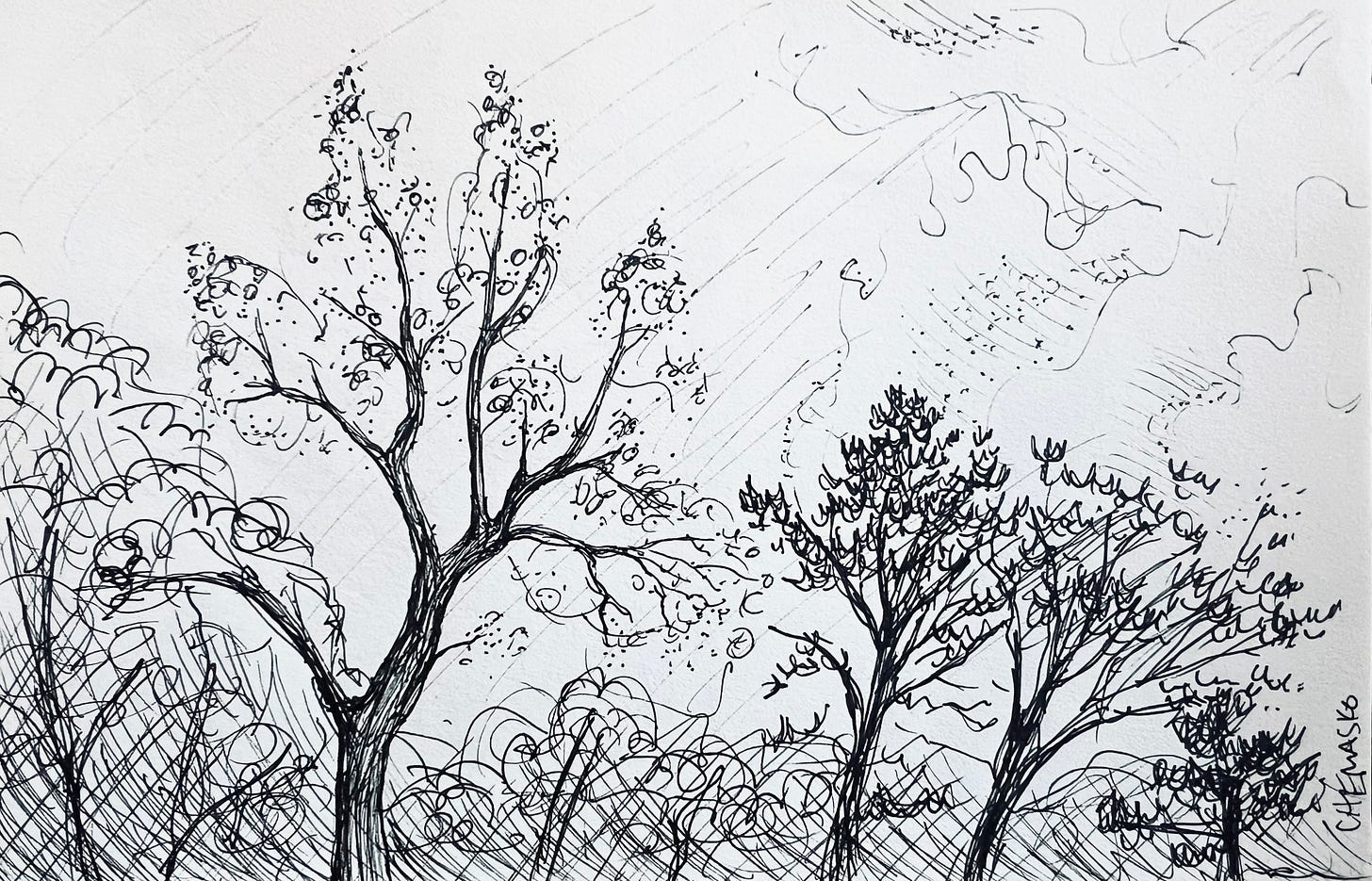
Oh, ok. It’s a retelling of the Aesop’s fable about the ant and the grasshopper1. Cool.
I go on with my preparations while the mice in the story continue theirs, too. Winter arrives, and the mice are satisfied and well fed for a long while. Eventually, most of the food is gone and winter becomes wearisome. The mice ask Frederick to share what he’s collected. Here comes the lesson, I think to myself as I slide back into my seat to catch the ending.
But it was not Frederick who was going to receive a lesson, it was I.
Frederick, it is soon revealed, is a poet. He conjures up warm sun, beautiful flowers, and other enchantments to fuel his despondent family through the remaining days of winter—inspirations he gathered and pieced together while doing “nothing”.
Gentle Frederick has just lovingly bowled me over. Feeding souls is important business. Furthermore, Frederick’s labor is valued just as much as the labor of the other mice.
The video narrator turns the last page and reveals a proud Frederick blushing at his family’s joyous admiration. He rescued them from despair. This is not the usual kind of message given out to children, is it? But why not?
I remember when I discovered that art can uplift a discouraged soul. It was powerful. That moment was why I chose to pursue art. Years later, when things were going more than a bit sideways, Vincent Van Gogh’s Irises revived my faith in everything turning out alright. I stood enthralled, awakened, and cleansed before the mystical beauty Van Gogh had communicated through the medium of paint. Negativity and fear dissolved into tears running down my face, making space for a newfound peace.
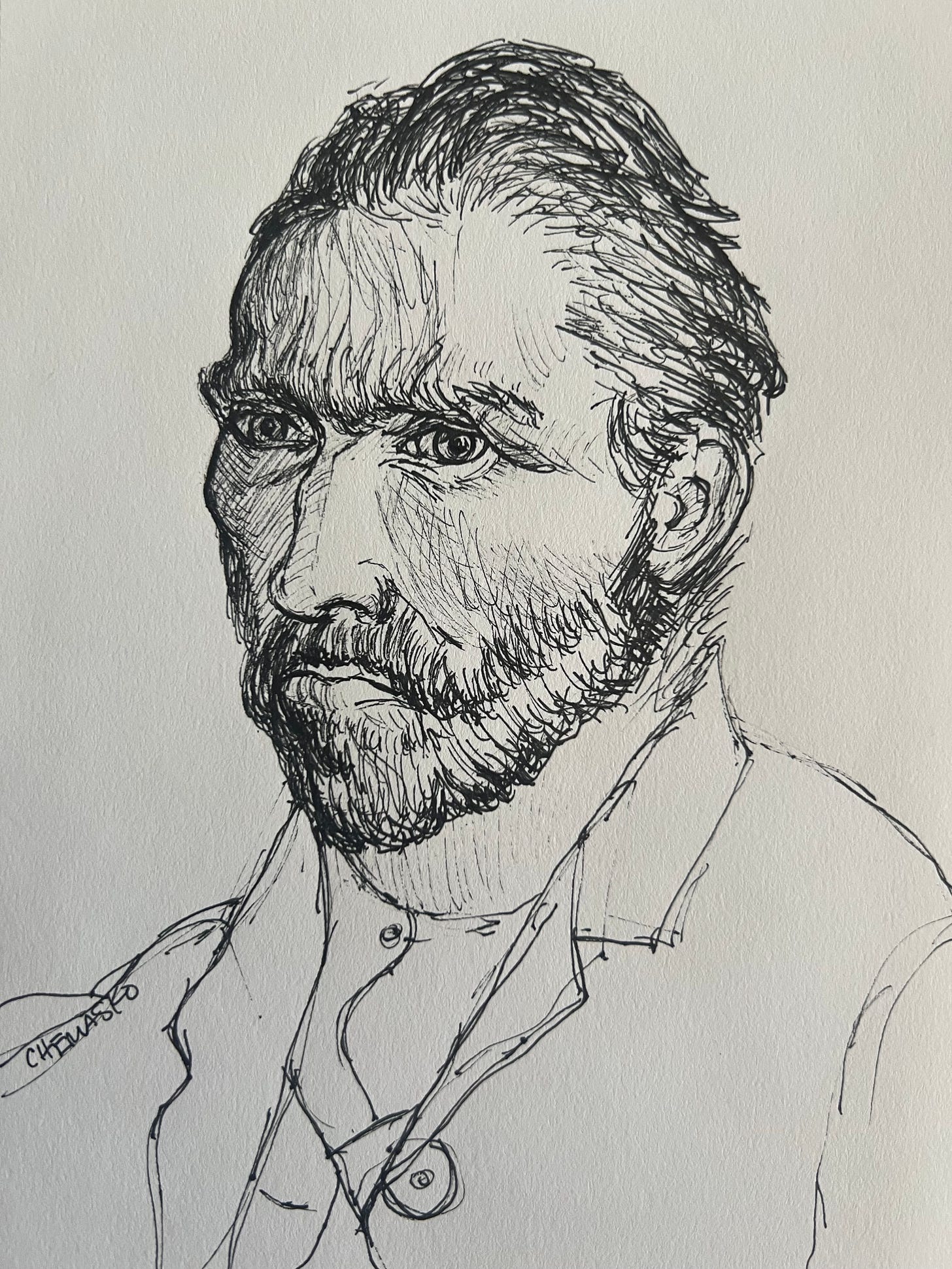
Art is a give and take, both for the artist and the audience. I believe an artist is someone who can take “nothingness” and turn it into a gift of beauty. An artist can draw one’s attention to a thing never noticed before or cast an under appreciated subject in a new and inspiring light. Giving back to art is in the taking. It’s in the act of opening up to accept the gift, seizing its beauty, letting it wash over you, letting it nourish you, letting it transform you, letting it edify you.
I thought about all this recently as I stood in the Columbia Art Museum, surrounded by a gallery of impressionistic masterpieces. Their kindred souls spoke to mine in language that transcends words. Real life paintings speak and breathe more clearly than ones captured on a screen. Those digitalized and pixilated voices are a poor substitute, yet I am grateful art exists in this format because I only had an hour and a half to spend in the gallery. I hurriedly scribbled notes detailing things I wanted to research later2, including The End of the Working Day by Jules Breton. Researching Breton at the end of my day, I came upon The Song of the Lark. I discovered that this glorious painting had so moved the actor Bill Murray that he did not follow through on an intent to end his own life3. Art shepherds us from darkness to light in the most astonishing ways.
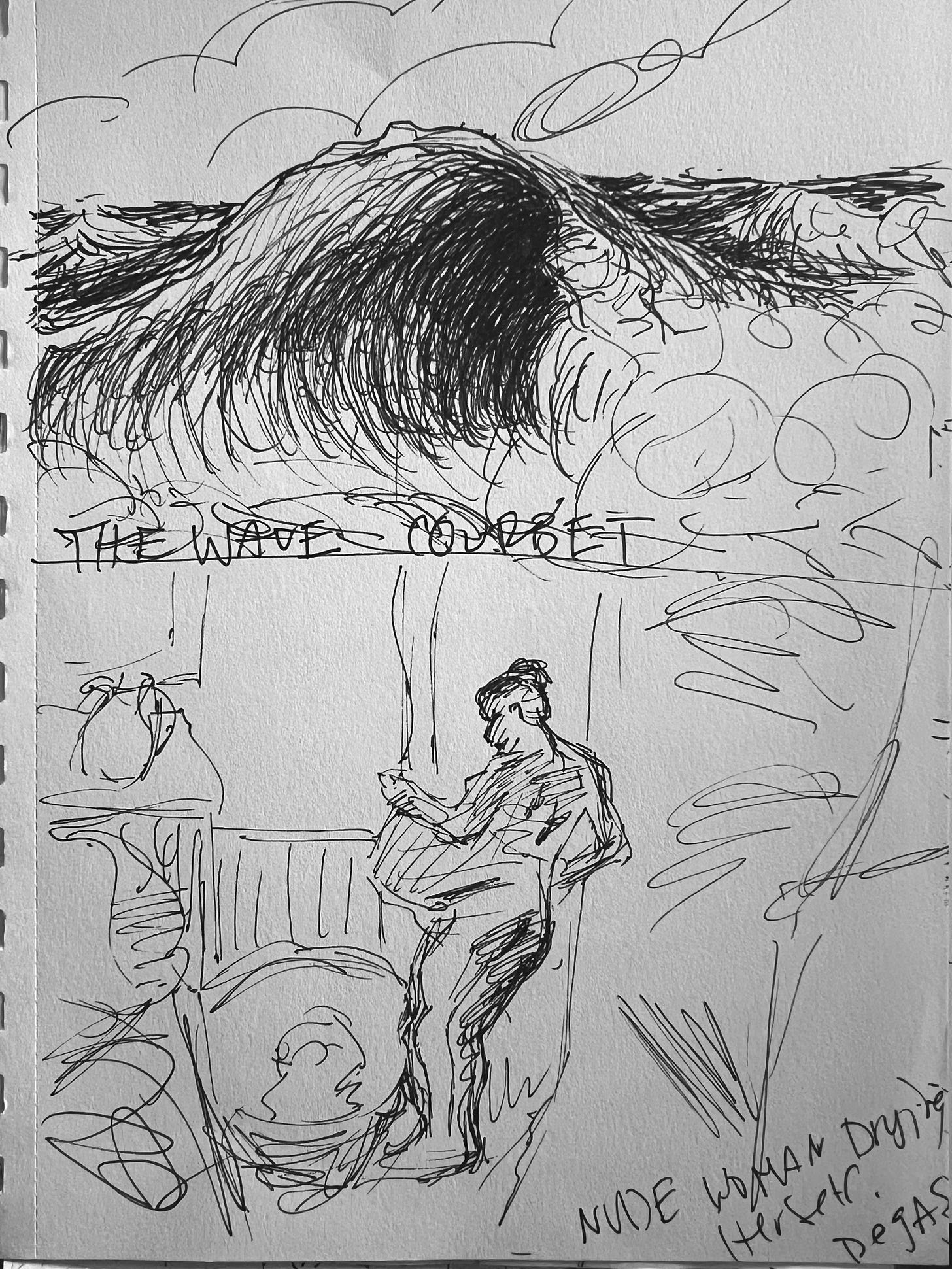
As we go through our architecture class, my belief that beautiful things are necessary to the soul’s edification is reinforced. My kids are ravenously gobbling this course up. Recently we studied Giulio Romano and we were especially enamored with his Room of Giants4 in the Palazzo del Té. His cheeky breaking of the rules throughout his career paved the way for a greater rebel—the illustrious Michaelangelo. He would go on to have a humungous and lasting impact on architecture though he didn’t even begin that particular career until he was 70. We were transfixed by the magnificent, pooling eddy of the Laurentian Library vestibule stairs.5
We are also still using Michael Newberry’s book as a template for our art classes. I’m thrilled to see the kids improving their drawing skills and applying the lessons outside of art class, too. Their favorite has been practicing perspective and the magical sense of depth and realism it imparts to a scene. They are delighted with their blossoming skills. You can check out Michael’s incredible Substack and joyous art here:
Life has been crazy, and will only continue to crescendo in the next few months, leaving me feeling guilty about doing “nothing”. Perhaps that is why Aesop usually gets top billing; “nothing” is unrealistic for many of us. But still, Frederick has put forth a powerful truth—art can turn despair to joy. I’m glad to say that both Aesop and Frederick are in our home library now.
In closing, here are a few paintings I made last month that I don’t think I’ve shared here yet:

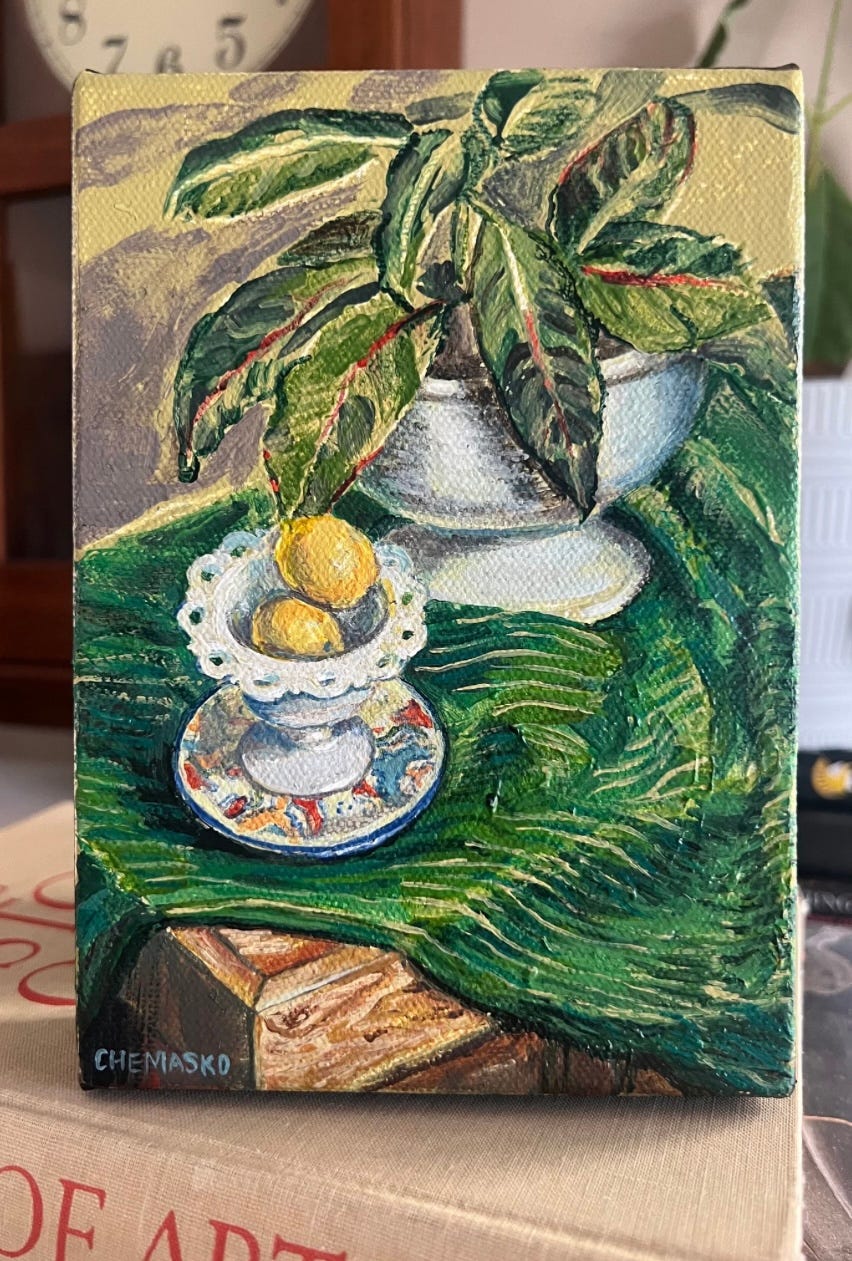

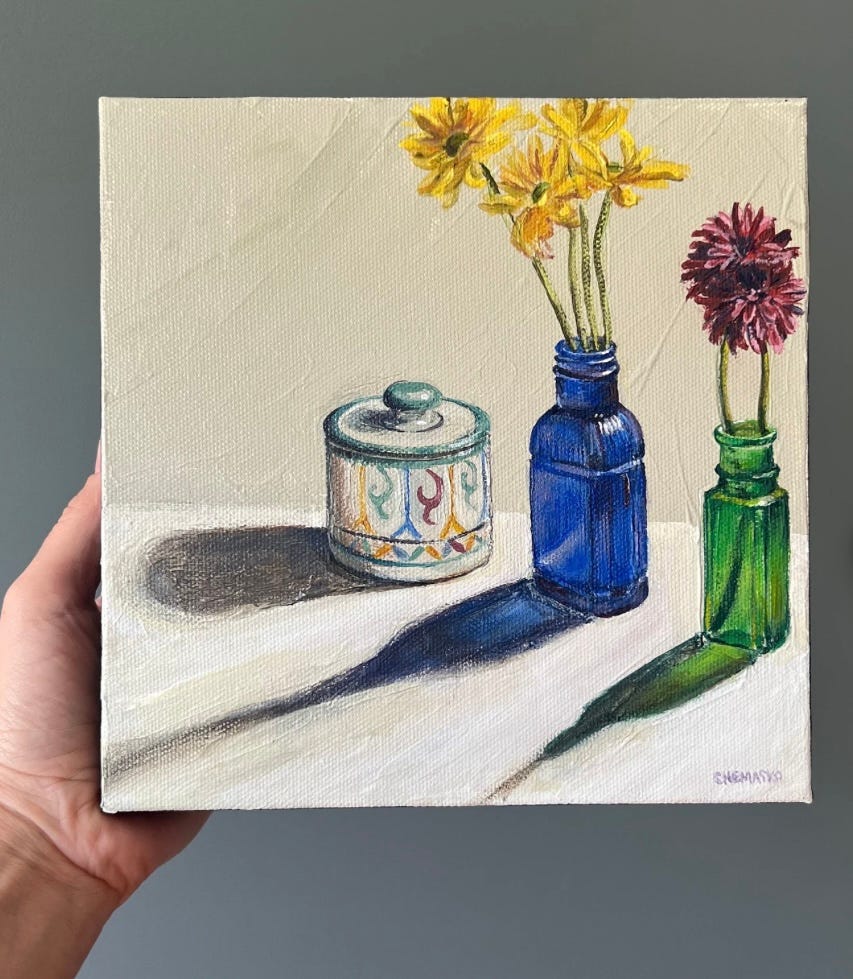
And a fun drawing I made on scrap paper in chalk and charcoal of Portrait of Verdonck by Franz Hals.

If you’d like to see more of my art, you can find it here:
Thank you for stopping by, I am grateful and humbled that you’ve allowed me a spot in your inbox to share my thoughts, my art, and my scribbles. I’d love to hear how art has helped you in your darkest moments, if you feel like sharing.
The world is so full Of a number of things I’m sure we should all Be as happy as kings. -Robert Louis Stevenson
I hope you find something today in this wide world to edify and make you feel “as happy as kings”; and when you do, gather it up, hold on to it, and cherish it when winter becomes wearisome.
-Jenn
https://read.gov/aesop/052.html
https://www.columbiamuseum.org/view/french-moderns-monet-matisse-1850-1950
A few other favorites that are not shown in the link above are:
József Rippl-Rónai, Woman with Three Girls:
https://www.brooklynmuseum.org/opencollection/objects/4959
Alfred Sisley, Flood at Moret:
https://www.brooklynmuseum.org/opencollection/objects/4383
Jean-Léon Gérôme, The Carpet Merchant of Cairo:
https://www.brooklynmuseum.org/opencollection/objects/4836
Eugène Louis Boudin, The Beach at Trouville:
https://www.brooklynmuseum.org/opencollection/objects/4365
Jules Breton, Breton Peasant Woman Holding a Taper:
https://www.brooklynmuseum.org/opencollection/objects/4392
Paul Cézanne, The Village of Gardanne:
https://www.brooklynmuseum.org/opencollection/objects/22914
Auguste Rodin, She Who Was The Helmet Maker's Once-Beautiful Wife :
https://www.brooklynmuseum.org/opencollection/objects/113811
Auguste Rodin, Danaid
That story can be found at the link below, as well as how he found solace in music during another low point.
https://www.today.com/health/bill-murray-credits-painting-stopping-suicidal-thoughts-t227555





You are right about that sort of internal nagging to have "something to show" for a given amount of waking time having expired. Something tangible, and not simply expressive, like art or music or writing. When I hear that voice reminding me of this or that job that really should be done, a fence painted or a room decorated etc , I now just remind myself that. no matter how assiduously I attend to all those maintenance/repair/improvements lists......it will still happen that within a few days of my remains being scattered to the four winds in the local hills, there will again be jobs that need doing on the house. And they will be done in good time by someone, when they don't have something less "productive" to do ! thanks for sharing your wonderful art pieces again. The lilypads and forever climbing trees image I particularly like.
Lovely, Jenn. Thank you.